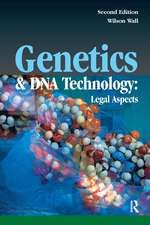Progress in DNA Damage Research
Autor Souta Miura, Shouta Nakanoen Limba Engleză Hardback – 30 sep 2008
Preț: 1119.52 lei
Preț vechi: 1525.72 lei
-27% Nou
Puncte Express: 1679
Preț estimativ în valută:
214.25€ • 222.85$ • 176.87£
214.25€ • 222.85$ • 176.87£
Carte disponibilă
Livrare economică 24 martie-07 aprilie
Preluare comenzi: 021 569.72.76
Specificații
ISBN-13: 9781604565829
ISBN-10: 1604565829
Pagini: 408
Ilustrații: tables & charts
Dimensiuni: 186 x 263 x 29 mm
Greutate: 1.1 kg
Editura: Nova Science Publishers Inc
ISBN-10: 1604565829
Pagini: 408
Ilustrații: tables & charts
Dimensiuni: 186 x 263 x 29 mm
Greutate: 1.1 kg
Editura: Nova Science Publishers Inc
Cuprins
Preface; Progress in Somatic Hypermutation Research; Factors Leading to the Induction and Conversion of DNA Damage into Structural Chromosomal Aberrations; Pesticides as Genetic Damage Inducers; DNA Damage Related to Exposure to Oil Spills: The Prestige Experience; Differentiated Cells Play Favorites: Dissecting the Mechanisms of Discrimination in DNA Repair; Functional Roles for Pro-Apoptotic Kinases on Nuclear Targeting and Induction of Apoptosis in Response to DNA Damage; Biological Significance of DNA Damage Checkpoint and the Mode of Checkpoint Signal Amplification; Cobalt Treatment Suppressing Mitochondrial DNA Damage Caused by Acute Exposure of H2O2; Molecular Basis of Guanine Oxidation Under UV-A/VIS Radiation and its Biological Effects; New Advances on DNA Fragmentation; Sperm Chromatin Damage; Sperm DNA Fragmentation in Assisted Reproduction; Comments on the Clinical Value of Determination of Sperm DNA Fragmentation; Assessing the Fast Micromethod as a Tool in DNA Integrity Analysis ; Unconventional Use of the Comet Assay to Identify and Classify Different Nuclear Phenotypes in Cell Cultures; Bromodeoxyuridine-Labeling and DNA repair, When Studying Neurogenesis; Index.























